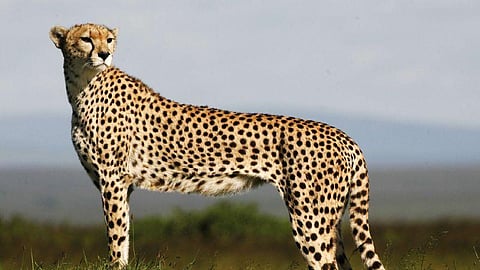Spotty quest for relocation
NEW DELHI: Last month, it was reported that India and Namibia had signed an MoU to reintroduce cheetahs in India after nearly 70 years.
The Kuno National Park in Madhya Pradesh is slated to receive the first tranche of eight cheetahs — three males, and five females, on Saturday.
India is also set to get 12 cheetahs from South Africa, for which a draft agreement had been signed.
The translocation is being viewed as a high profile affair by the Centre, as it marks a return of the top predator to a wildlife enclosure seven decades after three of the last recorded surviving cheetahs were gunned down in Chhattisgarh by Maharaja Ramanuj Pratap Singh in 1948 as part of a hunt.
In 1952, the Asiatic cheetah was officially declared extinct in India.
Currently, there are just 7,000-odd cheetahs left in the wild globally, with a majority of them being concentrated in African savannas.
India had recently rejected some of the cheetahs that were captured and quarantined in Namibia, for translocation to India.
The reason cited was that they were captive bred animals that were unable to hunt or catch wild prey. The translocation was subject to the clearance of the Convention on International Trade in Endangered Species of Wild Fauna and Flora (CITES).
The relocation plan has come under fire from environmentalists, who argued that the introduction of cheetahs from Africa was not a conservation priority for India. It does not even feature in our National Wildlife Action Plan (NWAP).
The relocation is being viewed as a vanity project, which does not account for the fact that the Asiatic lion is placed higher in the food chain as a predator compared to the cheetah.
The whole gamut of ecological roles and functions that can be accomplished by the introduction of cheetahs into the Indian wildlife ecosystem can be fulfilled using Asiatic lions as well, which are a mainstay of the Gir reserve in Gujarat.
Speaking of which, the Asiatic lion finds a place in our NWAP.
In 2013, the Supreme Court ordered the translocation of Asiatic lions from Gujarat to Kuno in a span of six months. In the same order, the Apex court set aside a proposal to introduce African cheetahs in Kuno.
The translocation of the lions remains in limbo chiefly owing to the arguments made by the Gujarat government stating that Kuno did not have a sufficient prey base.
Conservationists have pointed out that the cheetah relocation will entail expenditure in the hundreds of crores (Rs 40 crore in the first year), a sum the government was unwilling to cough up when it came to the protection of native endangered species including the caracal, wolf, lesser florican, and blackbuck.
India will have an estimated 21 cheetahs in the wild once the reintroduction takes place successfully.
But experts have countered this saying that 21 is far too small a number, and that it is indicative of a population that is not self-sustaining, let alone aid in the protection of other species and habitats.
Apart from the adaptation of the cheetahs to the new environment, the success of the programme is also dependent on sustaining habitats such as grasslands, shrublands which can support a sizable prey base including chinkara, blackbuck and other species, a mission that we haven’t really succeeded in.
Let’s not forget, the choice of Kuno as a relocation spot is also questionable, as there is no recorded evidence that top predators like leopards, tigers, lions and cheetahs can coexist in harmony within the same ecosystem.
Visit news.dtnext.in to explore our interactive epaper!
Download the DT Next app for more exciting features!
Click here for iOS
Click here for Android

